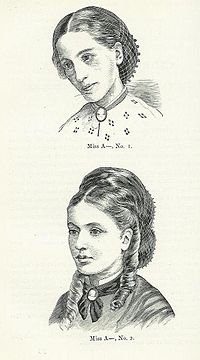
Photo from wikipedia
BACKGROUND Early onset anorexia nervosa (EOAN) is a subclassification of AN, defined by an onset before 14 years, and characterized by specific demographic, neuropsychological, and clinical features. The present study aims… Click to show full abstract
BACKGROUND Early onset anorexia nervosa (EOAN) is a subclassification of AN, defined by an onset before 14 years, and characterized by specific demographic, neuropsychological, and clinical features. The present study aims to provide naturalistic data on a wide sample with EOAN, focusing on psychopathological and nutritional changes occurring in the context of a multidisciplinary hospital intervention, as well as the rate of rehospitalizations during a 1-year follow-up. METHOD Observational, naturalistic study adopting standardized criteria for EOAN (onset before 14 years). EOAN were compared to adolescent-onset AN (AOAN) patients (onset after 14 years) by demographic, clinical, psycho and treatment variables. Psychopathology was assessed at admission (T0) and discharge (T1) with self-administered psychiatric scales for children and adolescents (SAFA) subtests for Eating Disorders, Anxiety, Depression, Somatic symptoms, and Obsessions. Then, potential differences of T0-T1 changes in psychopathological and nutritional variables were assessed. Finally, rates of re-hospitalizations at 1-year post-discharge follow-up were assessed with Kaplan-Meier analyses. RESULTS Two-hundred thirty-eight AN individuals (EOAN = 85) were enrolled. When compared to AOAN, EOAN participants were more frequently males (X2 = 5.360, p = .021), more frequently received nasogastric-tube feeding (X2 = 10.313, p = .001), and risperidone (X2 = 19.463, p < .001), obtained a greater T0-T1 improvement in body-mass index percentage (F[1.229] = 15.104, p < .001, η2 = 0.030), with higher 1-year freedom from re-hospitalization (hazard ratio, 0.47; Log-rank: X2 = 4.758, p = .029). CONCLUSION In this study, describing the broadest EOAN sample available in literature so far, EOAN patients received specific interventions and obtained better outcomes at discharge and follow-up when compared to AOAN. Longitudinal, matched studies are required.
Journal Title: Early intervention in psychiatry
Year Published: 2023
Link to full text (if available)
Share on Social Media: Sign Up to like & get
recommendations!